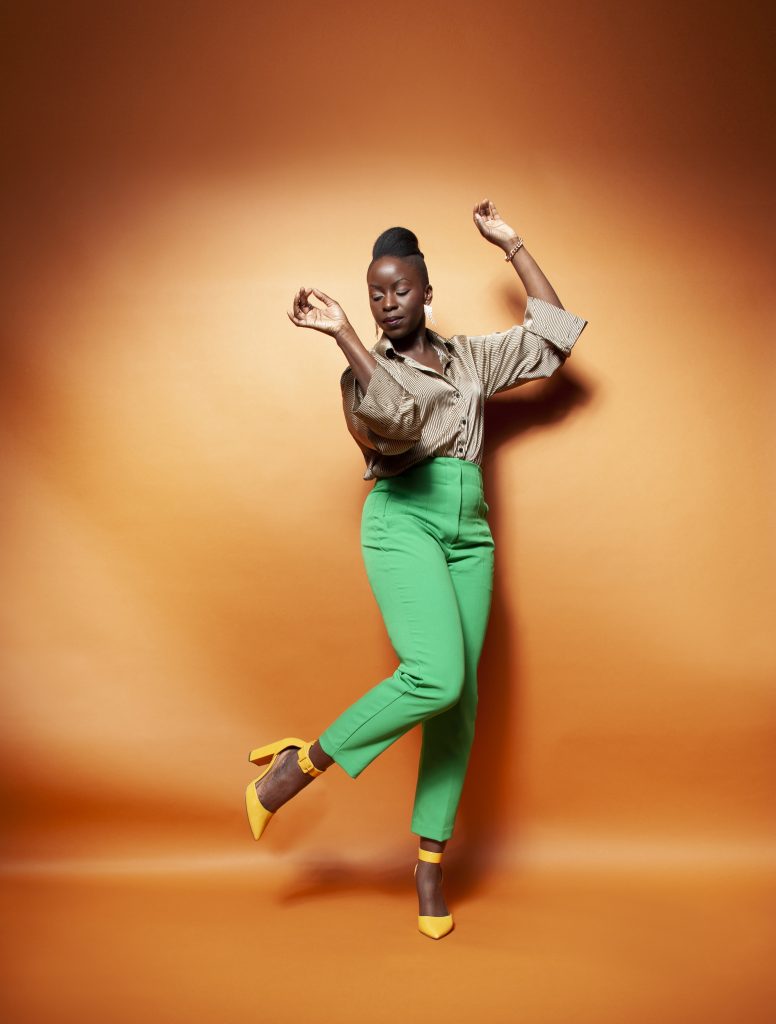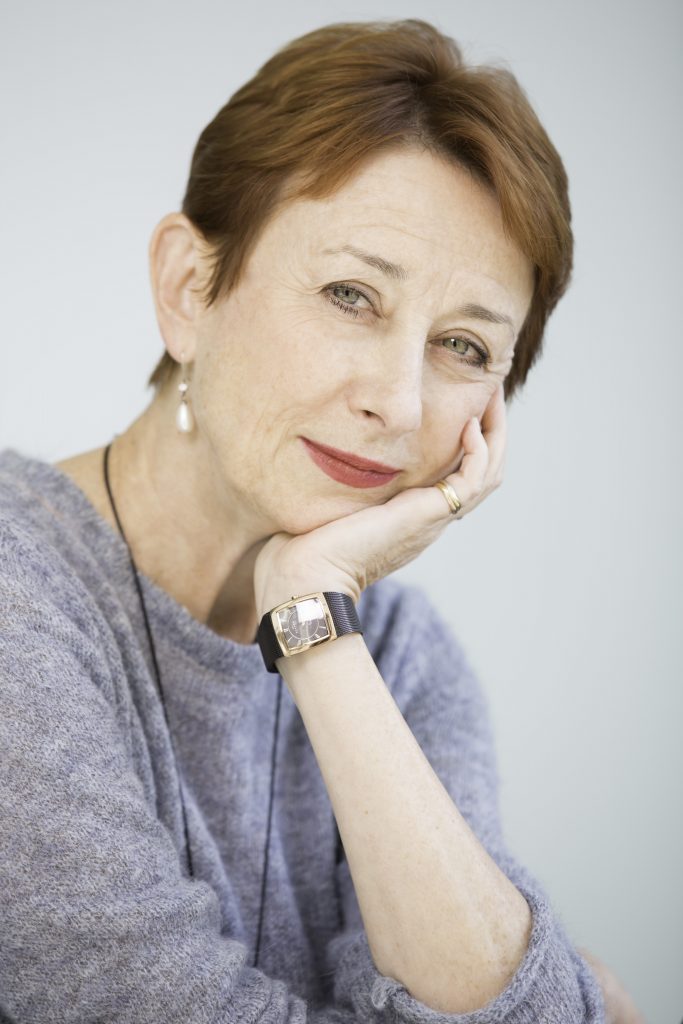Episode Notes
For our first episode, Mavis Staines joins Esie Mensah in studio. Staines is the CEO and the artistic director of Canada’a National Ballet School and she’s here to talk about systemic issues within educational institutions and the work that goes into making real, and lasting, change.
EPISODE 1 TRANSCRIPT

Esie Mensah: Hello, I’m Esie Mensah. I’m a multidisciplinary artist in Toronto, and I’m joining you all from in studio to host the first episode of Currently in Dance. On this biweekly summer
podcast, I’ll be chatting about the issues affecting dance communities across the country inspired by stories published in The Dance Current magazine, and I can’t wait for Episode 1. Cue the music. [Theme music]
[Clip: Pyotr Ilyich Tchaikovsky’s Swan Theme from Swan Lake]
EM: You’ve likely heard this piece of music before, Tchaikovsky’s swan theme from Swan Lake. I spent a lot of my time in front of the TV teaching myself music video choreography or learning traditional dances from Ghana with my family. I definitely didn’t spend my days wearing tutus and ballet shoes. But this music, especially having just seen National Ballet of Canada’s new production of Swan Lake, will always remind me of the image of the perfect ballet dancer. The thing is, classical ballet is rooted in European royalty and aristocracy. And with that, ballet doesn’t exactly have a rich history of diversity. Do you know Lauren Anderson? The first African American principal dancer at the Houston Ballet. She was an inspiration for Misty Copeland, the first Black principal dancer at the American Ballet Theatre. So many have fought to be seen. But there are still so many that remain unknown. I am always conflicted with the title of being the first Black anything, but it does help to bring awareness and, most of all, change. And for that change to take hold, it has to start at the source. Inside educational institutions.
[Clip: Welcome to Canada’s National Ballet School, where dancers of all ages and abilities unite through a passion for…]
EM: Canada’s National Ballet School. If you are a dancer here in Canada, you’ve likely heard of it. It was established in 1959 and is known as a pillar training institution for aspiring ballet dancers and teachers. Many alumni have gone on to become ballet masters and artistic directors.
[Clip: I absolutely loved my time at the school and in the profession. But the whole journey, I was constantly aware that there were traditional practices that were counterproductive…]
EM: That’s Mavis Staines. Since 1989, she’s been the artistic director of Canada’s National Ballet School and CEO since 2013. She has become a leader and a force of change. She
championed making the ballet world more comfortable for everyone to break away from those traditional ideals. In the past several years, the school has pushed even further to create a
more diverse, equitable and inclusive environment, which is why I invited Mavis Staines to have a conversation about that, and what she sees for the future of NBS. Hello, Mavis, thank
you so much for joining me.

Mavis Staines: Oh, it’s my pleasure.
EM: You have developed this incredible legacy as the artistic director of NBS. The school has been working for a number of years in Equity, Diversity and Inclusion even before the pandemic. At the same time, not every student has had a positive experience. Why was it important for you to see the school truly evolve?
MS: I think that it’s always been a priority to see the school evolve. I just wasn’t looking broadly enough. When I was offered the opportunity, what really attracted me was the chance to make
systemic changes within an art form, a process that I love passionately but right from my years as a student, I could see that there were traditions that were sometimes not only counterproductive but abusive. So, to have a chance to shift those has been a life gift. It’s been really meaningful. But I think it’s been, especially in the last five years, and then since the pandemic, where I thought, My goodness, the blinkers have been lifted now. And clearly, everything that’s happened since 1989 has been an opportunity to practice and say, now it’s the really, really deep work of advancing equity.
EM: Thank you, Mavis. Giving recognition to the abuse is so important, because it often goes unacknowledged. So, thank you. Thank you so much for that. We just played a clip of you
talking about your time as a student, and how you saw some of the traditions in ballet schools as counterproductive. Can you just talk a bit more about that?
MS: Absolutely. I think far too often, ballet dancers have been educated in a way where they have been discouraged, to develop their own voice and to be true to their own values. So, it was really, really important to me that there be ways that ballet dancers be educated to be equal creative partners. And that also that there is the shift from ballet only being about bodywork, and somehow a perfect body, that it was time to acknowledge that the body is the symphony orchestra with which one conveys the language of ballet and dance. The second thing is that so much of the feedback to ballet dancers has become solely about bodywork, and the body is the vessel. But it’s how you use your symphony orchestra. So, it’s been really pushing to say, let’s talk about what is actually the pulse and the force of ballet and dance rather than getting lost in the framework as opposed to looking at what’s within the framework.
EM: What are some of the lasting effects that you’ve seen in changing what we idealize in ballet? For instance, having a perfect body?
MS: Oh, that’s a great question. It’s one that I asked myself all of the time. It helps me when I pause and think, Okay, what has been the timeframe in which this has become so body focused, and I really think that it’s been since the mid 1970s, that it’s become increasingly, increasingly like that. Because if you look at ballet companies prior to that, there was a lot more diversity of, of look and a lot more focus on the movement and what it was dancers were conveying. But I think in a bizarre and unfortunate way, the explosion of ballet’s popularity in the 1980s with Nureyev and Baryshnikov and Makarova and the mystique around that. It became so popular that there was then this filtering of who was suitable and who wasn’t suitable, based solely on how they looked, rather than what they were bringing to the, to the language. So, I think it was the richness of popularity that created the beginning of this narrowing, which now, if we don’t open it up, I really think it puts ballet at risk.
EM: What do you think the lasting impact will be for students when they do find their voice? You know, what does that mean for teachers? What impact will that have on the form altogether?
MS: I think one of the things that you bring to the students, and I know I strive to do the same as do our colleagues, that this is about being accountable, in the best possible sense of the word not looking for any of us to be perfect, because that doesn’t exist. But if you can own when you realize that you’ve made a choice that you won’t make again, and that you’ve learned from it, then everybody feels safe to be human. And I think that, that is a big piece of this. And what I also love is that the changes within NBS are without a doubt, going to have a huge and important impact on ballet, because we’ve seen the impact that alumni have on ballet and on dance and then in the world beyond dance. So, I think that as we measure the change step by step exactly as you said that five years from now, 10 years from now, 20 years from now. It will be enduring, and it will be authentic. It’s going to adjust the system.
EM: I hate to pause. But we’re going to take a quick break. We’ll continue our conversation with Mavis Staines, CEO and artistic director of Canada’s National Ballet School after this
message.
Currently in Dance is brought to you by investwithtim.ca. Tim Ziegler is a financial security adviser and investment representative in Canada. After a 12-year acting career, he now works
with Canadian artists on their finances. And believe me, having an artist look after your finances, it makes a difference. Talk to Tim about investments, about life insurance, about debt. Ask about saving to buy a home, bring your questions and bring your parents. This stuff is important. Check out investwithtim.ca.
And we are back. So, at the end of January, NBS, the Dance Institute of Washington and Lauri Fitz Pegado, who is the author and founder of Dancing in the Dash, and Beyond the Ball. All of
you hosted a symposium called Addressing Racialization in Ballet. What was the mission of the symposium?
MS: The conversations that I had been having with Laurie and Kahina Haynes. Kahina, the director of the Dance Institute of Washington, had really been focused about just establishing a
partnership and saying what, what might be some collaborations that would make sense. And I came out of one of those conversations, and I went into a brainstorming session with colleagues about where and how we would position the school’s Annual Ideas Exchange, which is for ballet teachers from around the world to get together and exchange ideas. And I thought this is not a coincidence that I’ve just come out of a conversation with Lauri and Kahina, and I said to my colleagues, we need to focus the ideas exchange on addressing racialization in ballet. But my goodness, this is not something that we can do, without expert partnership. We’re going to be the learners in this. But with the resources that the school has and the networks, we can share that learning as extensively as possible, and bring in people from the ballet education community executive directors, educators in broader circles. And that was the beginning of the planning of the symposium.
EM: And what do you think the impact was? What could the next steps look like?
MS: I know that it’s going to grow. And right from the outset, we knew that we were planting a seed. And that there was an across the board commitment that this was not a one shot deal. This was a first step. We’re now in the middle of measuring what the impact is. We’ve certainly been able to get feedback from the students at the school, from the staff at the school, who have spoken about how those and as you said, over two weekends, it was 14 hours of discussion. So, there were different aspects of those 14 hours that jumped out to individuals in different ways, which was what we hoped. What was significant was the conclusion with Ashleigh Powell, one of NBS’s powerful community teachers and leaders, in partnership with Kahina Haynes, was looking at the whole issue of impact and measuring impact. My hope is that we can keep coming back to you and tell you what the impact was where the gaps were, but I do know that it captured everyone’s attention. I know that we need to find ways to make those 14 hours something that is as user friendly as possible, because no one can sit down and listen to 14 hours of videos. But there are ways to make sure that this endures and that it leads to the next step. Next symposium not sure about but I do know that to what we learn through the symposium and through the panelists, through the keynote speakers, is having a huge influence on the international festival that NBS is holding in the first week of
May 2023. So, a year from now. And it’s the fourth time that we’ve gathered young dancers, educators from around the globe, but it is the first time that the focus will be on addressing, that will be centered on addressing anti Black racism in ballet. And how collectively as a community, can we address that in ways that provides everyone agency and the excitement that this actually is ballet’s future. By doing this, it’s going to be vibrant, enduring, relevant, long into the future. Otherwise, it won’t be.
EM: Most definitely. This is exciting to see the school take action and make changes that will spread throughout the sector. And thinking about anti Black racism, what better thing to
examine than the ballet’s strict uniform? So how do you make space for change by implementing a new dress code at the school?
MS: As a, even as a student at the school, I didn’t understand why ballet students had to all be dressed the same. And in my years as the artistic director, there were several times when I came forward and said to the kids, Let’s, let’s look at that. Why, how and in what ways is this developing your individual sense of yourselves. But there was an attachment to the tradition, that the pandemic and the wake up to the pandemic of racism that has existed for hundreds and hundreds of years, meant there was finally the alignment of pieces, where the next generation of artists said, You’re right. And what we’re interested in is creating a roster of choices that we design. But in the meantime, let’s look at how making those choices of how we present ourselves in the studio is going to allow us an acceptance and a pride in who we are as individuals. And again, these things are symbolic, but symbols are important. And I know that as I’ve had this conversation with counterparts around the world the range of perspectives about this as a beneficial exploration is quite fascinating.
EM: Yes, it is truly exciting. We will be right back.
This podcast is sponsored by DanceHouse. DanceHouse presents winter guests evocative work Story, story, die., choreographed by Alan Lucien Øyen, June 22 and 23 at the Vancouver Playhouse. Through cinematic staging and poignant spoken word, Story, story, die. is a thought provoking look at the interdependency between lies and love and the surprising things we do in our everyday lives to present a more likeable narrative of ourselves to the world. Tickets for this in depth exploration of humanity’s relentless search for approval are available now at dancehouse.ca.
This podcast is also sponsored by The Shoe Room. The Shoe Room at Canada’s National Ballet School is Canada’s premier ballet boutique. With a collection of over 8,000 pointe shoes, our expert fitters can help you find your perfect pair in store or virtually. Visit www.theshoeroom.ca to book your appointment today. For $15 off your next $50 purchase, use code DC22 during checkout.
So, this is the last question for you Mavis. I wanted to get back to the intro, where we started. I spoke a bit about the history of ballet. So, what do you hope these systemic changes will have
on the future of NBS and ballet in general?
MS: I hope fervently, passionately that the work that NBS is doing right now and committed to drawing everyone within our network into discussing will open ballet to influences that it has needed more and more, especially in the last two decades. And as you and I have talked about before, Esie, we both love ballet, we both love dance. But ballet’s endeavor to become more and more refined has just made it restrictive in a way that the exclusivity in instances strangles the movement out of it. So, in terms of the language in the movement, it’s very exciting to see the expansiveness, the breadth, the life coming back, but also a respect, a self respect, a mutual respect to celebrate that when there is this shared sense of purpose, shared sense of passion that can bring out the best in people but only if the practices are respectful. Not if they’re hurtful and abusive.
EM: Mavis this has been a lovely and insightful conversation. Thank you so much for joining us. Mavis Staines is the CEO and artistic director of Canada’s National Ballet School. If you
like what you heard, be sure to subscribe to Currently in Dance wherever you get your podcasts. We’ll be back in two weeks with another episode. Currently in Dance is brought to
you by The Dance Current with support from Canadian Heritage. The Dance Current gratefully acknowledges Currently in Dance season sponsors Timothy Ziegler and The Shoe Room at
Canada’s National Ballet School. Our sponsors and advertisers are not involved in the editorial process. The show is produced by Ashley Fraser. Our consulting producer is Nicole Inica
Hamilton, our executive producer is Grace Wells-Smith. Our editor and composer is Jamar Powell, and I’m Esie Mensah. Thank you for listening to Currently in Dance.
